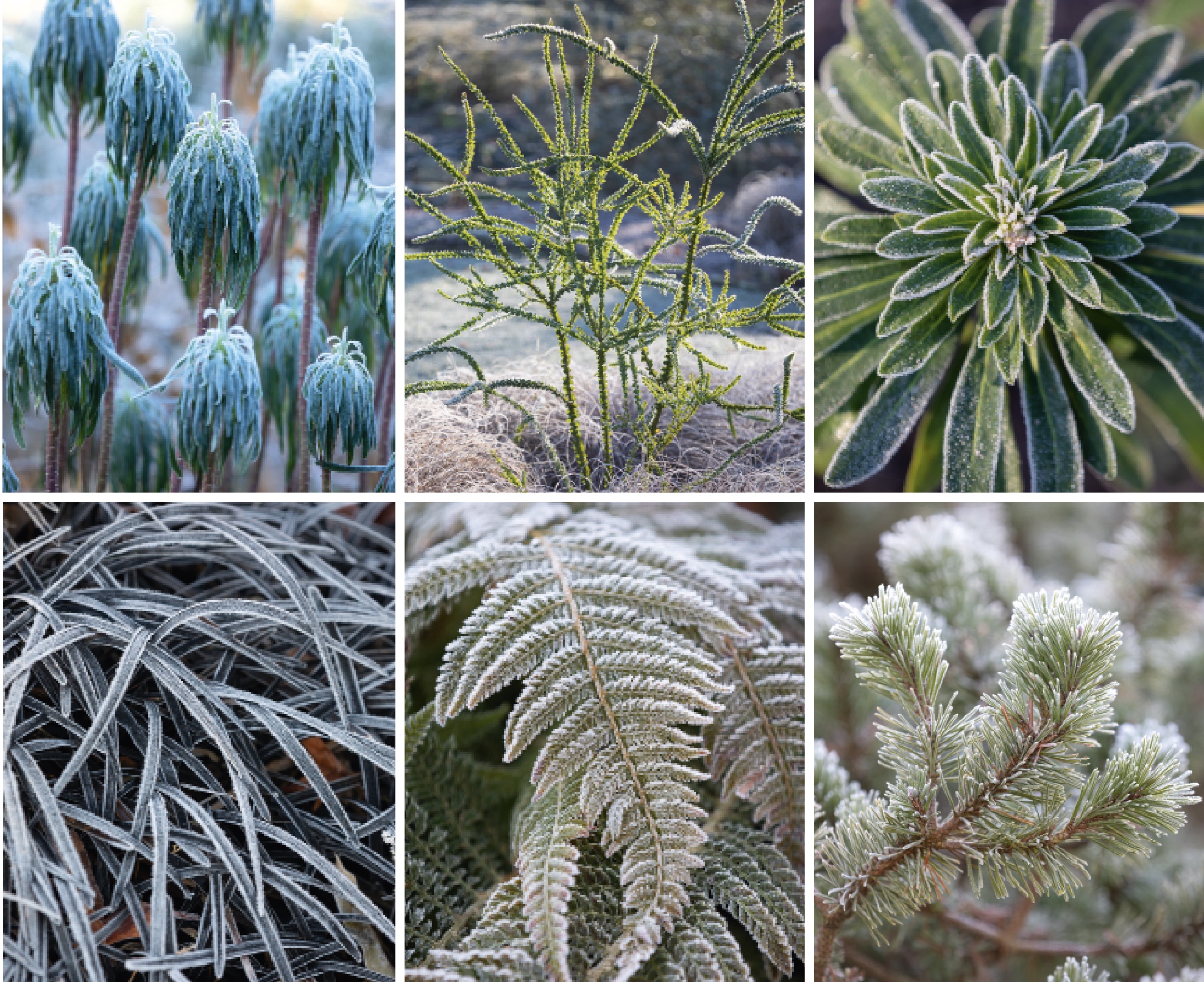The garden at Fullers Mill, where 'childhood delight in wild flowers meets the idea of making a garden'
Even in the coldest months, there is much to discover in the garden at Fullers Mill, West Stow, Suffolk. This remarkable plantsman’s garden was lovingly created out of rough ground by Bernard Tickner, finds Tiffany Daneff.


Patience is the word that keeps coming to mind when considering the waterside gardens at Fullers Mill near Bury St Edmunds in Suffolk. In particular, the precise way in which every plant, large and small, is placed to best advantage both for its own development and to draw the visitor on with an interesting specimen or intriguing view. This counts for so much in the depths of winter, when flamboyance and floriferousness are in short supply — and it is unexpected in a plantsman’s garden. But Bernard Tickner, who carved this space out of rough ground and woodland over 50 years, was a man of many talents.
Before buying Fullers Mill — a cottage on the banks of the River Lark — in 1958, Tickner had never gardened. His business was beer: he was head brewer at Greene King, where he developed Abbot Ale and a special Queen Elizabeth Coronation Ale in 1953. Although, as he wrote in his memoirs, A Scratch in the Soil (2017), gardening became his work and brewing was ‘a paid holiday’.
The cottage on the edge of King’s Forest, 5,700 acres of Forestry Commission (FC) land, came with a little vegetable plot and a small island between the Lark and the Culford Stream that could be reached by a footbridge over the weir. But there was no garden as such and, over the years, Tickner bought up more pieces of land from the FC as they became available, until the garden encompassed seven acres in all.

The fine Corsican pines that greet the visitor today were only knee high when Tickner arrived and the land that is now the Top Garden, opposite the entrance, had been used for growing poplars to make matches. After the Second World War, with the introduction of cheap lighters, the crop was no longer viable and only the stumps survived.
The first job was to improve the ground and make a lawn. This required as many as 15 to 20 lorry loads of washed soil from the local sugar-beet factory to smooth the difference in levels. For a year thereafter, every visitor was dragooned into marching up and down to help compact the soil before a roller was brought in to complete the job.
The island was the first area to be planted. In went 40 6ft-tall cricket-bat willows, as Tickner fondly anticipated the profits that would be made from harvesting them one day. In the meantime, in what would become a familiar pattern, he began collecting willows. Anticipating the many gifts of plants that would follow, a friend gave him a rare cutting from a Napoleon willow. (After the Emperor’s death, whips propagated from a willow growing on his grave on the island of St Helena were spread by sailors and were soon dispersed around the world.)
By the time the cricket-bat willows had matured, Tickner was already developing new horticultural interests and, over the years, he built up collections of euphorbias, peonies and species lilies, many of which continue to enjoy the dappled shade in the Low Garden, as the area became known. His philosophy was simple: to include as little hard landscaping as possible and to focus on rare and interesting plants. To cope with the poor sandy soil, many plants — particularly on the island — are Mediterranean in origin, planted into fine gravel, and there is a superb collection of alpines on the terraces in the Low Garden.
Exquisite houses, the beauty of Nature, and how to get the most from your life, straight to your inbox.
‘What I seek here is really a lack of design and a more natural feel to the garden,’ he wrote. Influenced by his great friend and neighbour Beth Chatto, he determined never to employ a garden designer. Instead, he used a mower to mark curving paths on the ground that would create new vistas and lure on the curious visitor. He loved showing keen gardeners around and took delight, when asked who had designed it, in replying: ‘No one. What you see has just happened; it has evolved.’
At first, he used to draw up a planting plan for the island beds created between his paths, but, on realising that things rarely grew according to plan, he simply planted a few specimens, usually selecting those with strong sculptural elements. ‘What interests me the most,’ he wrote, ‘is the effect of foliage in its infinite variety and combinations. It is the sculptural quality of plants that attracts me, their architecture.’
In large part, this is why the garden holds the eye in midwinter when even the sound of water, the only sound in this tranquil spot, is sometimes silenced.

He also loved it when visitors asked: ‘What’s that plant?’ Indeed, there are plenty of unusual specimens in the garden. Many were gathered in the mountains of Europe. Tickner’s Norwegian wife, Bess, became an expert at spotting plants and discovered a white Iris cretensis (violet is more usual), which was named after her. In turn, a yellow fritillary, spotted in a ravine in the Pyrenees, is now known as Fritillaria pyrenaica ‘Bernard Tickner’. Crete became a favourite hunting ground, one to which the Tickners returned again and again over 30 years, but many plants came from friends.
Graham Stuart Thomas was, Tickner wrote, ‘the presiding genius’ of the garden. ‘His insistence on the integrity of the species and his purist’s distaste for modern hybrids made the link for me between my childhood delight in wild flowers and the idea of making a garden.’
Tickner was influenced by Cedric Morris, Margery Fish and Christopher Lloyd and bought plants from the latter’s Great Dixter in East Sussex. He sought out hellebores — of which there are many at Fullers Mill — from Elizabeth Strangman at Washfield Nursery near Hawkhurst in Kent and Mary Barnard, both of whom did much work on hybridising. He became friends with Maurice Mason, Victoria Medal of Honour, who, after a good lunch, would pop specimens from his pinetum at Larchwood in the boot of Tickner’s car.
Alan Bloom of Bressingham, Norfolk, was another friend and provider of plants, but most of the plant labels that survive from those days record gifts from Ivan Dickings who was then the propagation manager at Notcutts nursery, Suffolk, and eventually became a trustee of the Fullers Mill Trust.
Annie Dellbridge now heads up the team at Fullers Mill, which Tickner left to Perennial, the only UK charity supporting those in horticulture, so that it would be properly cared for after his death (in 2017). She arrived in 2010, having worked for the Vestey family at Great Thurlow Hall and Little Thurlow Hall in Suffolk, and spent days with Tickner, learning his likes and dislikes, what he liked cut back and what he didn’t. They would go on plant-buying trips together. ‘Ninety-nine times out of 100, he’d go for the species over a cultivar,’ says Ms Dellbridge. ‘He appreciated the structure and form over massive flowers.’
In winter, she maintains the same routine, cutting back as required, clearing leaves as necessary and removing loose leaves from crowns, adding barrow loads of home-produced compost and applying quantities of bark mulch to help conserve moisture on the free-draining Breckland soil. ‘Winters here are pretty mild, wet and windy.’ The small, full-time team is bolstered with a rota of 30 volunteers. ‘If it’s a cold day, everyone will be put on rakes. If it’s warm, some will be down on hands and knees cutting back through the herbaceous material.’

Those years working with Tickner have put her in the ideal position to be true to his vision. ‘There are no statues in the garden and the benches — which are all wooden — were only added as he grew older.’
However, it is not always easy keeping track of every plant. ‘He kept books listing where plants came from — but not everything is in there — and he didn’t say where he planted them.’ That will eventually change, as Ms Dellbridge is going to upload and record everything in the garden on the IrisBG botanical-collection management system; a task that, if he didn’t fancy doing it himself, he surely would have applauded.
‘I feel the garden is still the same,’ she says. Some things, of necessity, have had to change: new plants — including his favourite lilies — have gone into the recently cleared area under the cricket-bat willows and across the water on a strip of land between the Culford Stream and the lake wildflowers are being encouraged. To add to the interest in winter, many more snowdrops have been planted and there are now more than 100 different kinds from around the world. ‘But the garden is still run on the same principles as before,’ she emphasises,’ so I hope it still feels like his garden.’ No doubt he would be delighted at its evolution.
Snowdrop Days at Fullers Mill, West Stow, Suffolk — www.fullersmill.org.uk — will be held on Wednesdays and Fridays in February 2023, from 11am — 3pm. For information about Perennial, visit www.perennial.org.uk
Winter wonders: The best plants at Fullers Mill
Maytenus boaria An unusual South American evergreen tree or shrub with delicate, fresh-green leaves in winter
Betula pendula subsp. pendula ‘Silver Grace’ A willow with striking white bark
Euphorbia ‘Redwing’ Discovered by Bernard Tickner as a chance seedling (possibly from E. characias subsp. wulfenii ‘Purple and Gold’), it is named after its bracts, which turn red in late winter
Ligustrum quihoui A semi-evergreen Chinese shrub that, at Fullers Mill, is coppiced to give a lovely airy vase shape
Hellebores Architectural foliage and early flowers
Snowdrops Fullers Mill is home to more than 100 varieties
Ilex myrtifolia A handsome holly with fine spiny leaves
Nandina domestica The attractive, lanceolate leaves turn purple in winter
Hamamelis mollis ‘Pallida’ A large specimen with sulphur-yellow flowers that bring scent, as well as colour in late winter
Previously the Editor of GardenLife, Tiffany has also written and ghostwritten several books. She launched The Telegraph gardening section and was editor of IntoGardens magazine. She has chaired talks and in conversations with leading garden designers. She gardens in a wind-swept frost pocket in Northamptonshire and is learning not to mind — too much — about sharing her plot with the resident rabbits and moles.
